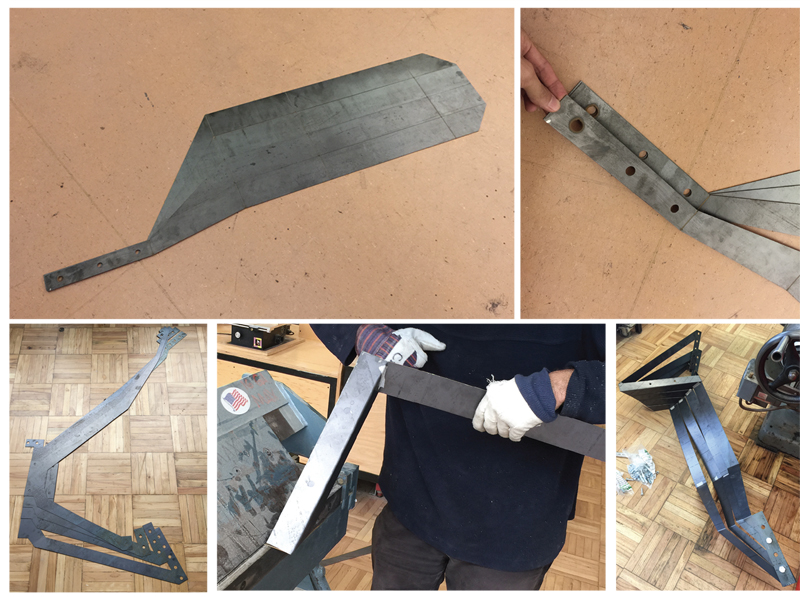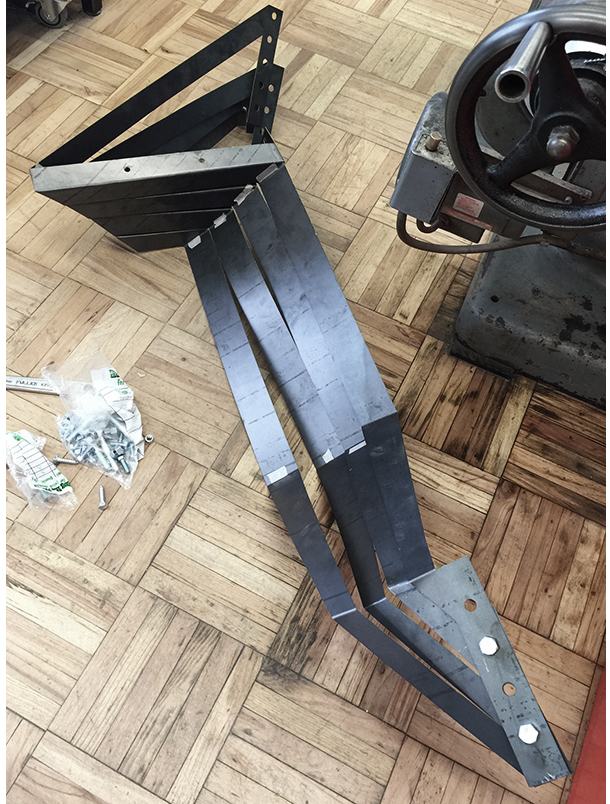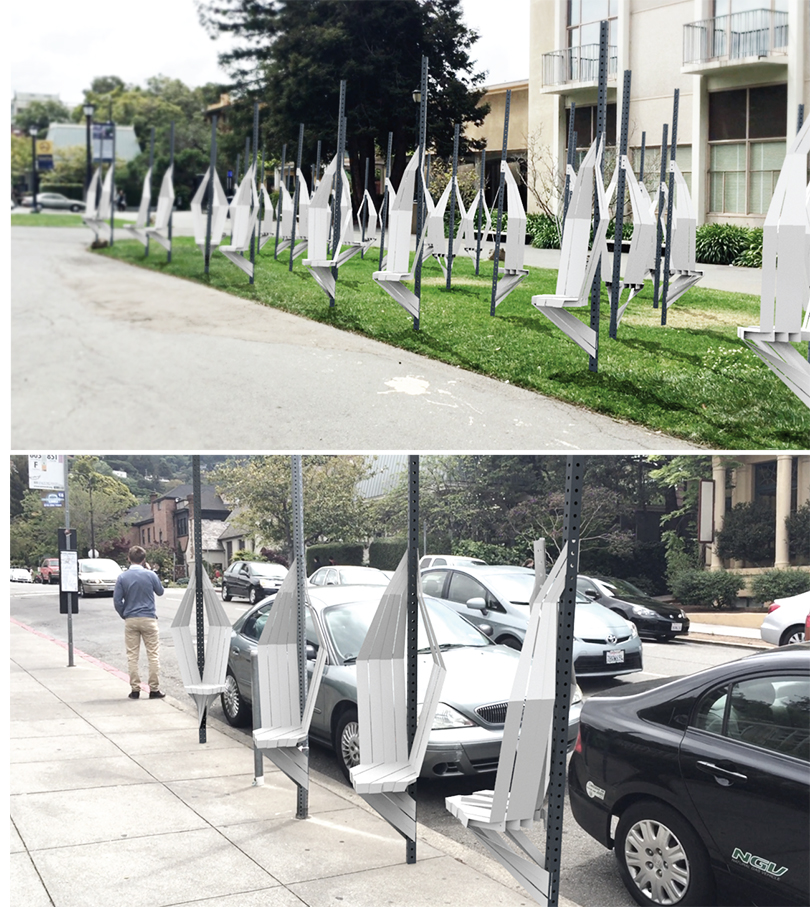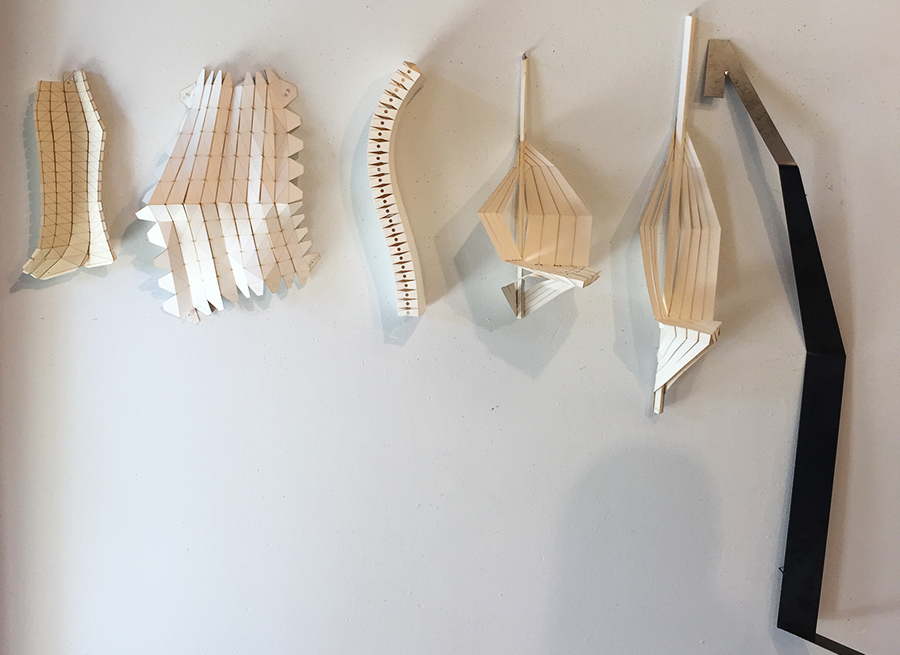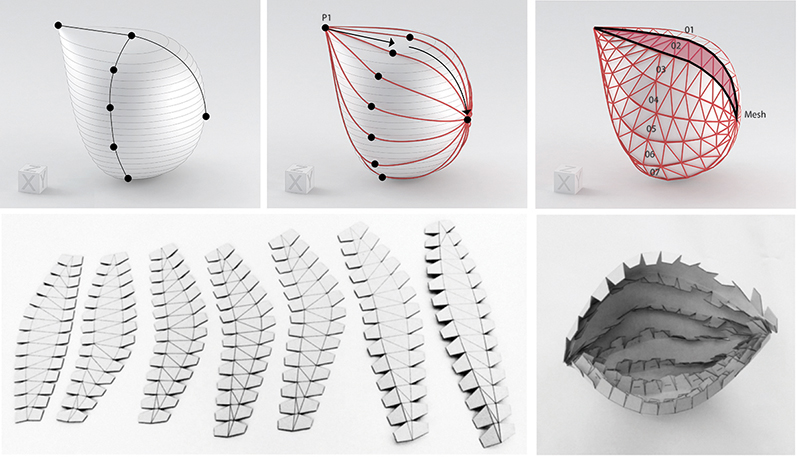|
A PARASITIC URBAN CHAIR, STRIP-BASED FABRICATION, RESEARCH |
Team
|

Overview
The compiler for the parasitic urban furniture is divided into four steps. Pass A takes into account the geometric rationalization of the design.
This means that it takes a given mesh or surface and converts it into an unrolled two dimensional representation. Pass B inputs joints, seams
and tabs on to the two dimensional drawing for assembly and Pass C nests the drawings into a boundary for fabrication. Finally Pass D gives
the instructions that aid in the assembly process.
Methods
Our design methodology used a parametric process to generate multiple strips that combined to form a seat that could be attached to a bus stop post.
The parametric model allows us to adjust various parameters of the design in order to adjust ergonomics and functionality. The design process
was then run through the compiler to develop a workable file for fabrication.
Meterialization
The strips were fabricated out of two, 4’x8’, 16 gauge steel sheets using an OMAX water jet. The steel strips were bent at specific locations using
a brake machine and attached to a unistrut using standard nuts and bolts. Steel was chosen as the material of choice due to its bending qualities
which allowed for flexibility of the structure after fabrication.
Realization
The obvious realization is the complications that unfold once a design is taken out of the digital phase and implemented into real life fabrication.
Bending steel at the correct angles was a challenge as well as rationalizing the assembly process in terms of nuts and bolts. A thorough research
of material properties and behaviour through test cuts and simulations is always advisable so that one is able to grasp the possibilities and
limitations of the assembly process.
Future Work
We intend to further refine the compiler so that the assembly can be a smoother process. The use of steel has been a challenging but fascinating experience
and we intend to explore the material and its possibilities for fabrication in the future.
